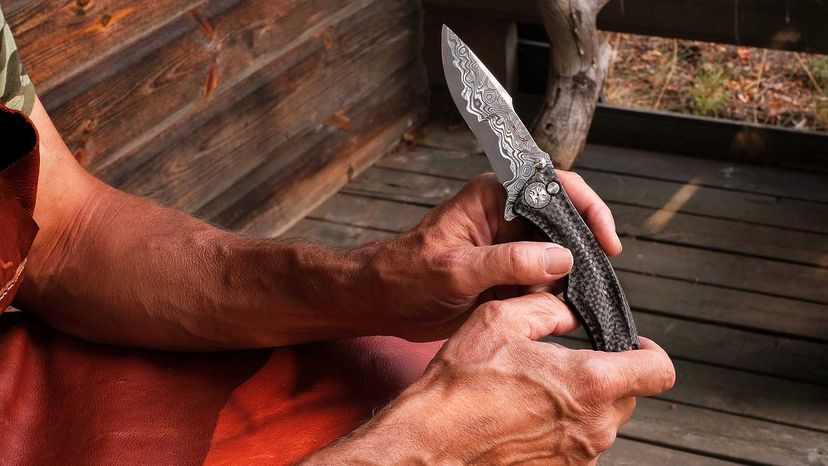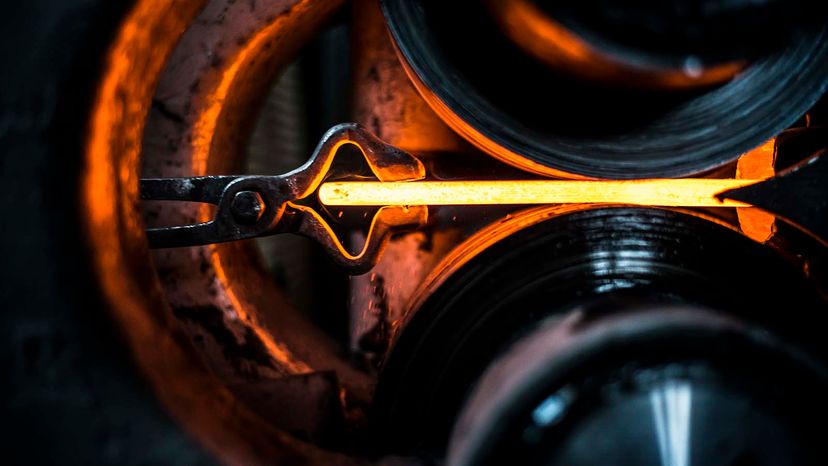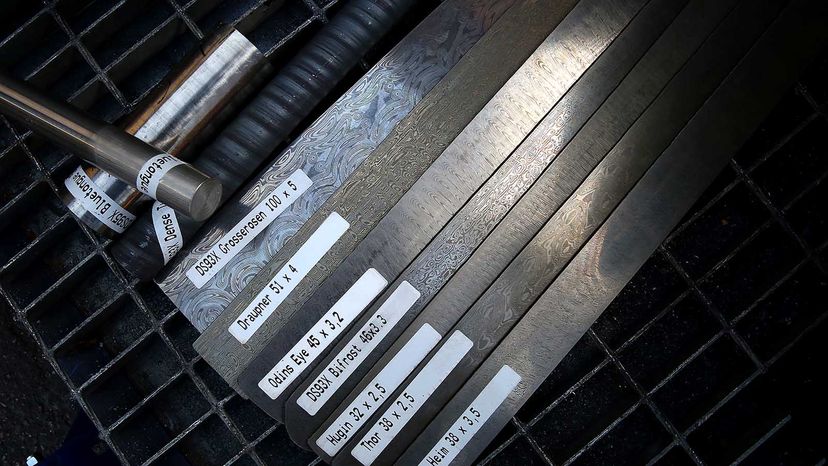There are various methods for making Damascus steel today. Some true artists create a limited run of an individually designed piece of steel, Jarbelius says. Other Damascus steelmakers are interested in higher volume production and repetition of specific patterns. Damasteel, the Swedish company Jarbelius works for, uses powder metallurgy to do just that.
In conventional steelmaking, you forge solid pieces together, he explains. Instead, Damasteel makes stainless Damascus-patterned steel through powder metallurgy. Working with two grades of steel for color variation, Damasteel creates a "recipe" for a pattern and is able to repeat it.
Some patterns are trade secrets, while others are just difficult to replicate. There are similar patterns that multiple blacksmiths make, although they might have different names. What one smith calls a Rose pattern, another may call a Raindrop, for example.
If the pattern names sound too delicate for the nature of the business, there are other options too. Damasteel has patterns called Thor, Odins Eye, Loki, Bifrost and Bluetongue. Or consider Snake Skin, Razor Wire and Fireball from Devin Thomas. What they all have in common is a quality of beauty.
"You are making Damascus steel types because it's pretty," says Jarbelius. "You are looking for aesthetics more than function."





